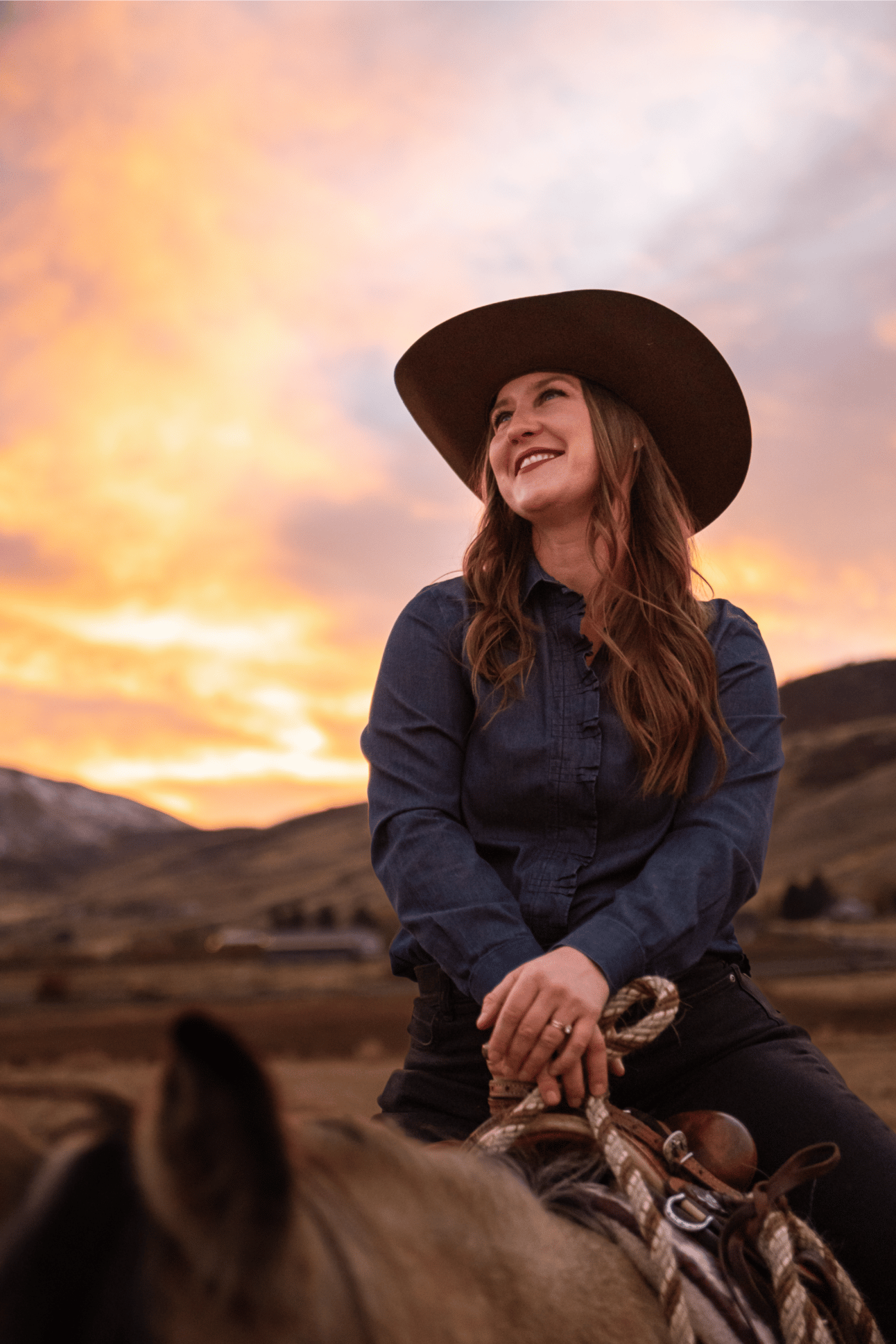- Resilient Reiner Newsletter
- Posts
- How to Sit the Sliding Stop (Without Bracing or Freaking Out)
How to Sit the Sliding Stop (Without Bracing or Freaking Out)

Hey! Prefer to listen instead of read the Newsletter? I got you! The Resilient Reiner Newsletter also comes as a podcast! 🎙️ Tune in to listen now!
Welcome to another episode of “Ask Nicole”
“Nicole, how the heck do I sit the sliding stop without bracing or getting thrown forward? I feel like I freeze up every time, and I just can’t stay with my horse.”
If you’ve ever felt like a ragdoll flying into a sliding stop… You are not alone in this. So today I’m going to break it all down—what’s actually happening in your body, why your brain is reacting the way it is, and how you can train yourself to sit deeper, soften your seat, and actually ride that stop like the confident rider you want to be.
Sound good?
Let’s do it.
Want to listen to the podcast??? LISTEN HERE!
The Real Reason You Brace
So let’s start with the obvious:
Yes, there’s technique involved in sitting the sliding stop. But that’s not the full story.
Because the thing no one tells you is this:
You can know the mechanics—and your body will still betray you if your nervous system is in fight-or-flight.
You might’ve had your trainer say, “Just sit back,” or “Let your hips follow.”
But when your nervous system says “nope, danger ahead!”—you lock up. You grip with your thighs. Your hands tense. Your breath disappears.
And boom—you get thrown forward or off-balance.
It’s not because you don’t know what to do.
It’s because your system doesn’t feel safe letting go.
It’s Not About Strength—It’s About Safety

Let me say this clearly:
Sitting a sliding stop is not about being stronger.
It’s about being softer… on purpose.
And softness requires safety.
Because here’s what’s happening:
When your brain doesn’t trust the situation—when it thinks “This is fast, this is powerful, this is unpredictable”—your body’s first instinct is to brace.
That’s your survival wiring doing its job.
It’s not wrong—it just hasn’t been updated yet.
So instead of following your horse… you fight the movement.
And instead of riding the stop like a partner… you’re stuck in defense mode.
And defense mode does not sit well.
The Technical Breakdown
Mechanically, sitting the stop well is about softness, not strength. You’re not muscling your way through it. You’re staying deep in your seat, letting your pelvis follow the motion, and trusting your body to move with your horse.
BUT…
None of that matters if your nervous system is in fight-or-flight.
Your Brain Can’t Relax Without a Cue
This is where nervous system regulation comes in.
Because you can’t just think your way into staying calm—you’ve got to train it.
Before you ever sit the stop, your brain needs a clear message:
“I’m safe. I’ve got this. I know what to do.”
And we build that through preparation, breath, and body cues—not through trying harder.
The Real Problem: Bracing = Protection Mode
Most riders brace because their nervous system interprets the stop as danger. It’s fast. It’s powerful. It requires surrender and feel—not control. So what does your brain do? It tightens. It locks your hips. It grips with your thighs. And all of that throws you forward.
Key point:
It’s not about a lack of skill. It’s about a lack of safety.
Let me give you a super practical breakdown.
Here’s How You Actually Train It
1. Before You Ride
Start regulating before you even swing a leg over.
2. During the Ride
As you prepare for the stop, keep your focus narrow.
3. After the Ride
Reflection rewires awareness.
And that awareness is what makes the next rep better.
It’s Not About Perfection—It’s About Leadership
Listen, rider—
Your horse doesn’t need you to be perfect.
They need you to be present.
They need a partner who can soften when the pressure’s on.
And that’s what we’re training for.
You don’t need to white-knuckle your way through a sliding stop.
You need to lead it—with clarity, softness, and confidence.
And that starts before the stop even happens.
If this hit home—if you’re bracing, spiraling, or getting thrown off rhythm in your riding—this is exactly the kind of thing we work on inside Mental Gym for Equestrians.
It’s not just mindset.
It’s nervous system training for real riders, in real situations.
You’ll learn how to stay grounded in the saddle, reset quickly after a spiral, and show up like the calm, confident rider your horse needs.
Head to The Mental Gym for Equestrians to check it out.
You don’t need to fix everything overnight—you just need to start training your system like you train your horse.
And I’d love to help you do that inside the Gym.
Until next time, ride with intention.
Lead with softness.
And remember—you’re always one breath away from a better ride.
See you soon.
Nicole

Reply